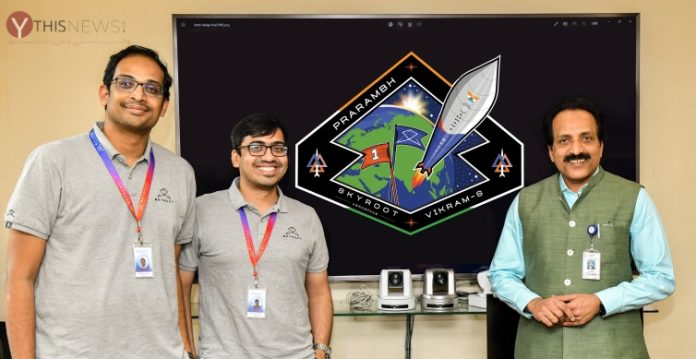Hyderabad-based startup Skyroot Aerospace is set to become the first private space company in India to launch a rocket into space. The maiden space launch from ‘Prarambh’ (the beginning) is scheduled to take place between November 12-16.
On Monday, ISRO Chairman Dr Somanath unveiled the first space mission in Bengaluru. With the Vikram-S launch vehicle, the first privately developed rocket will take off. Skyroot’s launch vehicles are named Vikram in honor of Vikram Sarabhai, the father of Indian space exploration. It is scheduled to launch from ISRO’s launch pad at Sriharikota in a suborbital mission carrying two Indian and one foreign payload.
Although officials have announced a launch window between November 12 and 16, the final date will be determined by weather conditions.
“A launch window between November 12 and 16 has been notified by authorities, the final date being confirmed based on weather conditions,” Skyroot Aerospace CEO Pawan Kumar Chandana said.
As Skyroot Aerospace invites in a new era for the private space sector, Chandana stated that Skyroot was only able to build and launch the Vikram-S rocket in such a short period of time due to the invaluable assistance of ISRO and IN-SPACe. Skyroot signed an MoU with ISRO for the sharing of facilities and expertise a year after the Government of India opened up the space sector to allow private sector participation.
ALSO READ: Hyderabad-based Skyroot Aerospace raises $51 million to boost small satellite launches
Much More Rides on India’s Bahubali Rocket Than 36 Oneweb Satellites
Skyroot, based in Hyderabad, develops cutting-edge space launch vehicles for launching commercial satellites into space. According to the statement, it aims to disrupt entry barriers to cost-effective satellite launch services and spaceflight by advancing its mission to make spaceflights affordable, reliable, and consistent for all.
The four-year-old Skyroot has built and tested India’s first privately developed cryogenic, hypergolic-liquid, and solid-fuel rocket engines. Advanced composite and 3D-printing technologies are heavily used in R&D and production.
(This story has been sourced from a third-party syndicated feed, agencies. Raavi Media accepts no responsibility or liability for the text’s dependability, trustworthiness, reliability, and data. Raavi Media management/ythisnews.com reserves the sole right to alter, delete or remove (without notice) the content at its absolute discretion for any reason whatsoever.)


